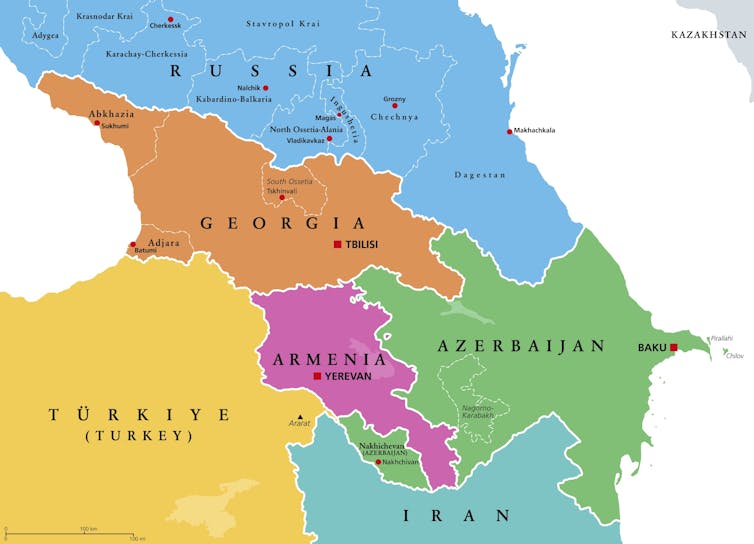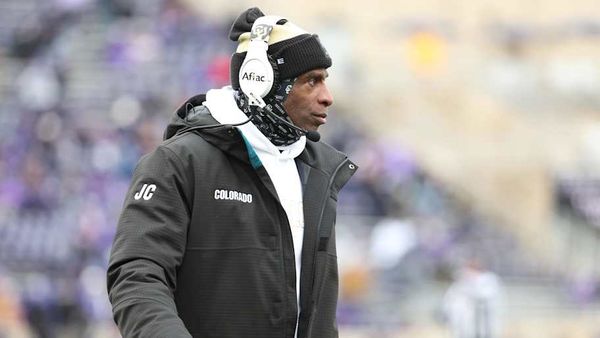Armenia and Azerbaijan signed a peace framework in Washington on August 8 after nearly four decades of conflict. The two nations, long divided over territorial disputes, committed to end hostilities, normalise relations and respect each other’s territorial integrity.
Brokered by the US president, Donald Trump, it had all the glitzy appearance of a comprehensive peace agreement. But in reality, it is merely a move in that direction. There are still many ways it could break down.
The decision of Armenia’s prime minister, Nikol Pashinyan, to pursue peace is politically risky. Armenian military defeats to Azerbaijan in 2020 and 2023, and the loss of the disputed Nagorno-Karabakh region, left deep scars.
Many Armenians feared concessions would legitimise Azerbaijan’s military gains or erode national sovereignty. Diaspora voices warned of “rewarding aggression” and ignoring the rights of displaced Karabakh Armenians. Yet Pashinyan pressed ahead, arguing a diplomatic settlement was the only route to security and prosperity.
His pivot away from relying on Russia – a former security guarantor whose credibility in Armenia has crumbled after failing to stop Azerbaijan from seizing Nagorno-Karabakh – signals a profound geopolitical shift. The US is now the guarantor of security, ending the Minsk process that has been working to resolve the conflict since 1994.
Sovereignty secured
One of the thorniest issues was Azerbaijan’s demand for a land route across southern Armenia to connect with its Nakhchivan exclave. Armenians feared this could mean ceding control of national territory. The US-brokered agreement resolves the dispute.
Armenia retains full sovereignty and jurisdiction over any new route. All transport links will operate under Armenian law, with Armenian customs and security in place. This is a marked improvement on the vague “unimpeded” transit clause in the 2020 ceasefire, which left room for dispute.
By enshrining sovereignty in the text, Armenia can reassure its public that the corridor is not an extraterritorial carve-out, but a transport link it is hosting. However, the corridor runs close to the Iranian border. And the Iranians, also pushed out of their influential role in Armenia by this deal, have already rejected it.
Following its recent war with Israel, Iran is perhaps too weak to stop the project from starting. But it could represent a threat to the security of companies involved in the route’s construction.

The transit corridor, which connects Azerbaijan to Turkey as well as to Nakhchivan, will be named the Trump Route for International Peace and Prosperity. The US has secured a 99-year development lease for the route. Planned infrastructure includes highways, railways, pipelines and fibre-optic cables.
Armenia keeps legal control, but gains investment and transit revenue from these endeavours without bearing construction costs. Azerbaijan will gain faster, cheaper export routes for oil, gas and manufactured goods to Turkish and European markets. Armenia also stands to benefit from access to Turkey if the border reopens – the Turks closed it in 1993 in support of Azerbaijan.
Armenia and Azerbaijan have signed separate bilateral agreements with the US on energy, technology and infrastructure, signalling a parallel push to modernise their economies as they normalise relations. Georgia, traditionally the most pro-western and strategically vital state in the South Caucuses, has been sidelined by this arrangement. This is a consequence of its more pro-Russia stance.
Read more: Georgia: how democracy is being eroded fast as government shifts towards Russia
The Washington summit has capped years of intermittent mediation attempts. What set this round apart was sustained, high-level US engagement. The Trump administration sent envoys repeatedly, kept negotiations focused on solvable issues, and re-framed the transit corridor as a shared commercial venture.
US involvement is also a built-in guarantee. By taking a long-term stake in the corridor’s development, Washington has an interest in ensuring the agreement is implemented and respected. For Armenia, US backing offers reassurance against renewed coercion from Azerbaijan backed by Turkey. And it opens the door for Azerbaijan to forge deeper ties with the west during a period of bad relations with Russia.
Hurdles ahead
Despite the celebratory signing, the peace deal faces significant hurdles. The agreement sidesteps the plight of Armenian prisoners of war and detainees still held in Azerbaijan. It also ignores the right of return for over 110,000 Armenian civilians who were forcefully expelled from Nagorno-Karabakh. Armenian opposition and diaspora groups have criticised the accord for “sidelining justice”.
Political challenges inside Armenia further cloud the deal’s future. Azerbaijan’s president, Ilham Aliyev, has demanded that Armenia amend its constitution to renounce any territorial claims – specifically removing the 1990 declaration of independence that implied Nagorno-Karabakh is part of Armenia. Baku insists this change is a prerequisite for a “final” peace treaty.
Such external pressure is deeply sensitive. Pashinyan has agreed in principle that Armenia needs a new constitution by 2027 to reflect post-war realities. But if the alterations are perceived as capitulation to Azerbaijani diktat, the domestic backlash could be intense.
The Armenian opposition – already angered by the loss of Karabakh – will likely seize on any constitutional concessions as evidence of national humiliation. With parliamentary elections on the horizon in 2026, Pashinyan’s rivals are positioning to campaign against the peace deal.
They argue that his western-leaning “peace agenda” endangers Armenia’s sovereignty and security. Some have hinted they would reject or renegotiate the agreement if they come to power. Pashinyan’s party was polling poorly earlier in 2025, and recent local elections saw gains for pro-Russian figures, suggesting a volatile electorate.
Armenia’s security services have warned of possible foreign interference and destabilisation efforts as the elections approach. Moscow, in particular, could covertly back Pashinyan’s hardline opponents or spread disinformation to sway the vote, hoping to install a more Russia-aligned leadership that might undermine the deal.
The Washington framework has opened a path to peace. But the coming months and years will determine whether pragmatic interests can triumph over entrenched mistrust.
To succeed, Armenia and Azerbaijan must navigate a minefield of unresolved disputes and political minefields at home, all under the gaze of regional powers uneasy about their changing environment. Washington and Brussels will need to remain engaged, to guarantee compliance and help deliver early economic gains that reinforce peace.
If either side reneges – be it through renewed demands, slow-rolling implementation or back-channel interference – hard-won progress could quickly unravel. This historic breakthrough thus marks not an endpoint but the start of a delicate balancing act.
Brian Brivati does not work for, consult, own shares in or receive funding from any company or organisation that would benefit from this article, and has disclosed no relevant affiliations beyond their academic appointment.
This article was originally published on The Conversation. Read the original article.







